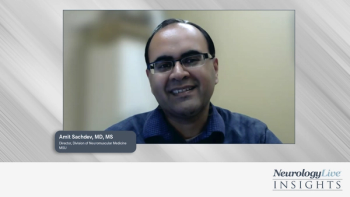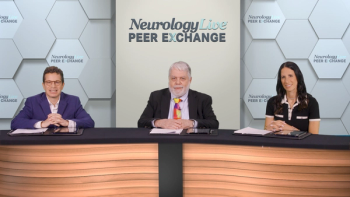
CNM-Au8 Shows Continued Decreases in ALS Mortality, Updated Open-Label Findings Show
Treatment with CNM-Au8 was well-tolerated, with no new safety signals, and decreased the risk of death by 70% compared with placebo on unadjusted Kaplan-Meier analyses.
Newly announced interim data from the RESCUE-ALS clinical trial (NCT04098406) showed that treatment with CNM-Au8 (Clene Nanomedicine), an investigational suspension of clean-surfaced, catalytically active gold nanocrystals, resulted in significant survival benefit among patients with amyotrophic lateral sclerosis (ALS).1
"We are very pleased to see these results and the apparent survival benefit that our investigational drug, CNM-Au8, appears to provide to people living with ALS,” Rob Etherington, president, and chief executive officer, Clene Nanomedicine, said in a statement.1 "At this point, we are awaiting top-line data from the HEALEY ALS Platform Trial, which focuses on endpoints measuring patient function, survival and breathing over a six-month period in a much larger cohort. Clene expects to announce these results this quarter. Based on the larger number of patients treated in the HEALEY trial and the higher dose of CNM-Au8 being tested, we are optimistic that we will be able to adequately characterize the effects of our drug on this devastating disease."
In RESCUE-ALS, patients with ALS were randomly assigned 1:1 to either 30 mg of CNM-Au8 or placebo for 36 weeks during the double-blind period, followed by an open-label extension of up to 130 weeks of treatment. Participants in the placebo-treated group, who received either no treatment or a 9-month delay in treatment initiation with CNM-Au8, were compared with patients treated daily with study drug from randomization.
READ MORE:
When comparing active vs placebo groups, 5 deaths were reported for those on CNM-Au8 (n = 23) compared with 14 deaths observed in those randomized to placebo (n = 22). Median survival from randomization in the CNM-Au8 group was undefined due to insufficient mortality events, and median survival in the placebo group was 23.1 months. Additionally, after substituting death in place of lost to follow-up censoring, sensitivity findings remained concordant to Kaplan-Meier estimates (HR, 0.338; 0.143-0.797; P = .0182). Similar to previous studies, the treatment was well-tolerated, with no significant safety findings across both the double-blind and extension periods.
He added, "It is a paradigm shift. A lot of this has come through understanding the disease itself. TDP43 and the connections to ALS was a relatively recent discovery in the last decade. Then, there’s been a lot of interest in ALS with the Ice Bucket Challenge and there’s been a lot of support from industry and philanthropy, and that’s driven the science through the roof. As a result, now we have a lot of compounds coming through."
In the original double-blind portion, CNM-Au8 did not meet its primary or secondary end points in change of Motor Unit Number Index (MUNIX) biomarker and forced vital capacity but did show a MUNIX efficacy signal after 12 weeks of treatment (P = .057). In a subset of patients with limb onset ALS, which accounts for approximately 70% of the ALS population, CNM-Au8 showed a significant treatment effect in MUNIX at week 12 (P = .057), with a trend for improvement at week 36 (P = .0741). Additionally, at week 36, CNM-Au8-treated patients demonstrated significant benefits in several exploratory end points, including slowing ALS disease progression (P = .0125), decreasing the proportion of participants with an ALS Functional Rating-Scale Revised 6-point decline (P = .035), an improving quality of life as measured by the ALS Specific Quality of Life (P = .018).2
REFERENCES
1. Clene reports significantly decreased mortality in RESCUE-ALS long-term open label extension trial. News release. Clene Nanomedicine. July 14, 2022. Accessed July 20, 2022. https://www.globenewswire.com/news-release/2022/07/14/2479565/0/en/Clene-Reports-Significantly-Decreased-Mortality-in-RESCUE-ALS-Long-Term-Open-Label-Extension-Trial.html
2. Clene Nanomedicine announces top-line results from phase 2 RESCUE-ALS clinical trial. News release. Clene Nanomedicine. November 2, 2021. Accessed July 20, 2022 https://invest.clene.com/events-and-presentations/Press-Releases/news-details/2021/Clene-Nanomedicine-Announces-Top-Line-Results-from-Phase-2-RESCUE-ALS-Clinical-Trial/default.aspx
Newsletter
Keep your finger on the pulse of neurology—subscribe to NeurologyLive for expert interviews, new data, and breakthrough treatment updates.




































